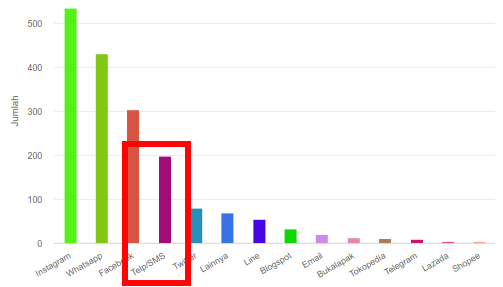Analisis Forensik Untuk Mendeteksi Pesan yang Disembunyikan pada Short Message Service Menggunakan Aplikasi Berlisensi Open Source
Abstract
Anti Forensic Techniques aim to complicate the process of investigating a crime. Hiding an SMS message with the aim or support of a crime can be categorized as an Anti Forensic technique. On smartphones with the MIUI operating system, it is equipped with features to block an SMS message and even hide an SMS message. The existence of a feature to hide SMS messages will complicate the investigation process if this feature uses to support crime. This research proposes a forensic analysis method to detect hidden SMS messages using open-source software. Differences in the process of retrieving digital evidence will affect the results of forensic analysis. So in this research to compare the results of the analysis of two digital forensic software to detect hidden messages.
References
[2] V. G. Larenda, M. Unik, dan H. Mukhtar, “Analisis SMS Forensik Smartphone sebagai Rujukan Menghadirkan Barang Bukti yang Sah di Pengadilan,†2016.
[3] S. Kurniawan, “Perancangan Prosedur Operasional Standar Penanganan Alat Bukti Digital: Studi Kasus Kementerian Komunikasi dan Informatika,†Universitas Indonesia, 2014.
[4] F. G. Hikmatyar, “Analisis Forensik Digital pada Smartphone Android untuk Penanganan Kasus Cybercrime,†Universitas Islam Negeri Sunan Kalijaga, 2017.
[5] Z. R. Mair, “Aplikasi untuk Identifikasi Short Message Service (SMS) SPAM Berbasis Android,†Universitas Gadjah Mada, 2013.
[6] I. Y. Pasa dan D. Hariyadi, “Identifikasi Barang Bukti Percakapan Aplikasi Dual Apps Whatsapp Pada Ponsel Xiaomi Menggunakan Metode NIST Mobile Forensics,†J. INTEK Univ. Muhammadiyah Purworejo, vol. 1, hal. 1–7, 2018, [Daring]. Tersedia pada: http://ejournal.umpwr.ac.id/index.php/intek/article/view/4815/4641.
[7] R. Ayers, S. Brothers, dan W. Jansen, “NIST Special Publication 800-101 Revision 1: Guidelines on Mobile Device Forensics,†Gaithersburg, MD, Mei 2014. doi: http://dx.doi.org/10.6028/NIST.SP.800-101r1.
[8] Z. R. Mair dan A. Ashari, “Aplikasi untuk Identifikasi Short Message Service (SMS) Spam Berbasis Android,†Berk. MIPA, vol. 24, no. 4, 2014.
[9] M. P. Aji, D. Hariyadi, dan T. Rochmadi, “Logical Acquisition in the Forensic Investigation Process of Android Smartphones based on Agent using Open Source Software,†in IOP Conference Series: Materials Science and Engineering, Mar 2020, vol. 771, hal. 012024, doi: 10.1088/1757-899X/771/1/012024.
[10] D. Hariyadi dan A. A. Huda, “Laron: Aplikasi Akuisisi Berbasis SNI 27037:2014 pada Ponsel Android,†Indonesia Security Conference 2015. Cirebon, hal. 1–10, 2015, doi: 10.13140/RG.2.1.3819.9520.
[11] M. Unik dan V. G. Larenda, “Analisis Investigasi Android Forensik Short Message Service (SMS) Pada Smartphone,†JOISIE (Journal Inf. Syst. Informatics Eng., vol. 3, no. 1, hal. 10, 2019, doi: 10.35145/joisie.v3i1.414.
[12] S. C. Sathe dan N. M. Dongre, “Data acquisition techniques in mobile forensics,†2018, doi: 10.1109/ICISC.2018.8399079.
[13] I. Riadi dan A. Firdonsyah, “Forensic Analysis of Android-based Instant Messaging Application,†in 2018 12th International Conference on Telecommunication Systems, Services, and Applications (TSSA), Okt 2018, vol. 4, hal. 1–6, doi: 10.1109/TSSA.2018.8708798.
[14] D. Hariyadi dan E. T. Irawan, “Purwarupa Forensik BBM di Telepon Seluler Android Menggunakan IGN-SDK,†Indonesia Security Conference 2014. Yogyakarta, hal. 2–8, 2014, doi: 10.13140/RG.2.1.2771.3764.
[15] J. Grover, “Android forensics: Automated data collection and reporting from a mobile device,†in Digital Investigation, 2013, vol. 10, no. SUPPL., doi: 10.1016/j.diin.2013.06.002.
Authors

This work is licensed under a Creative Commons Attribution-ShareAlike 4.0 International License.

